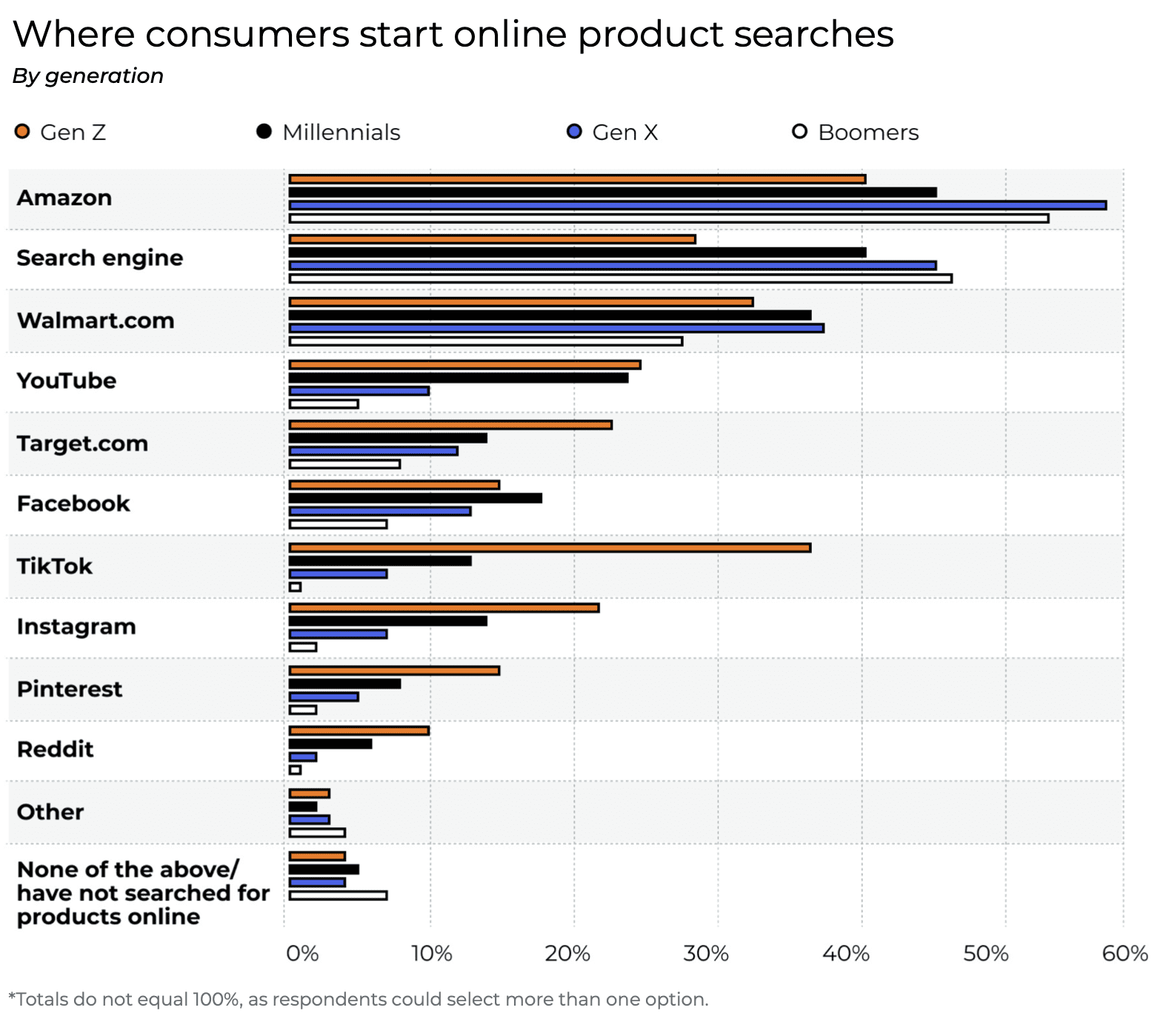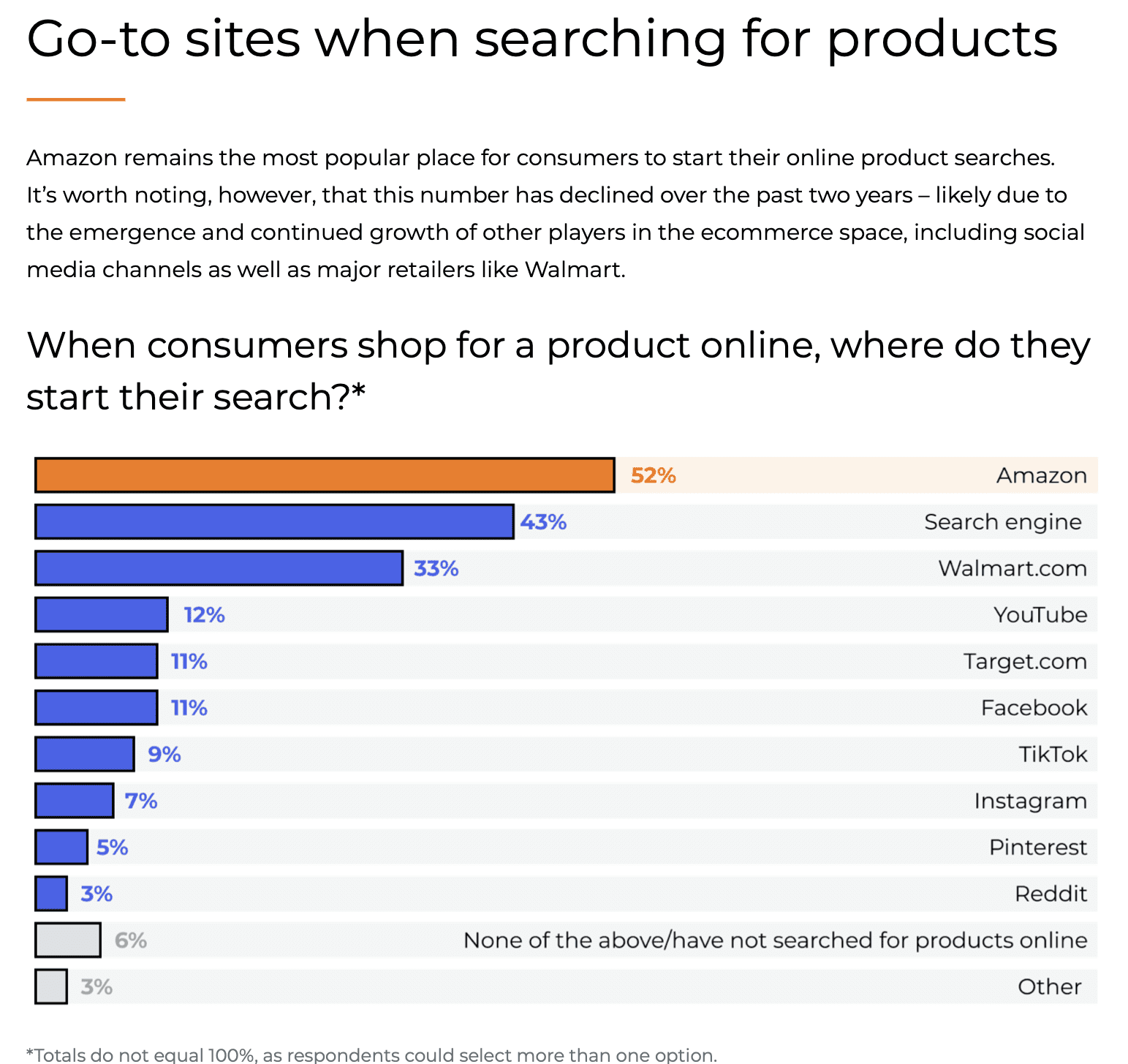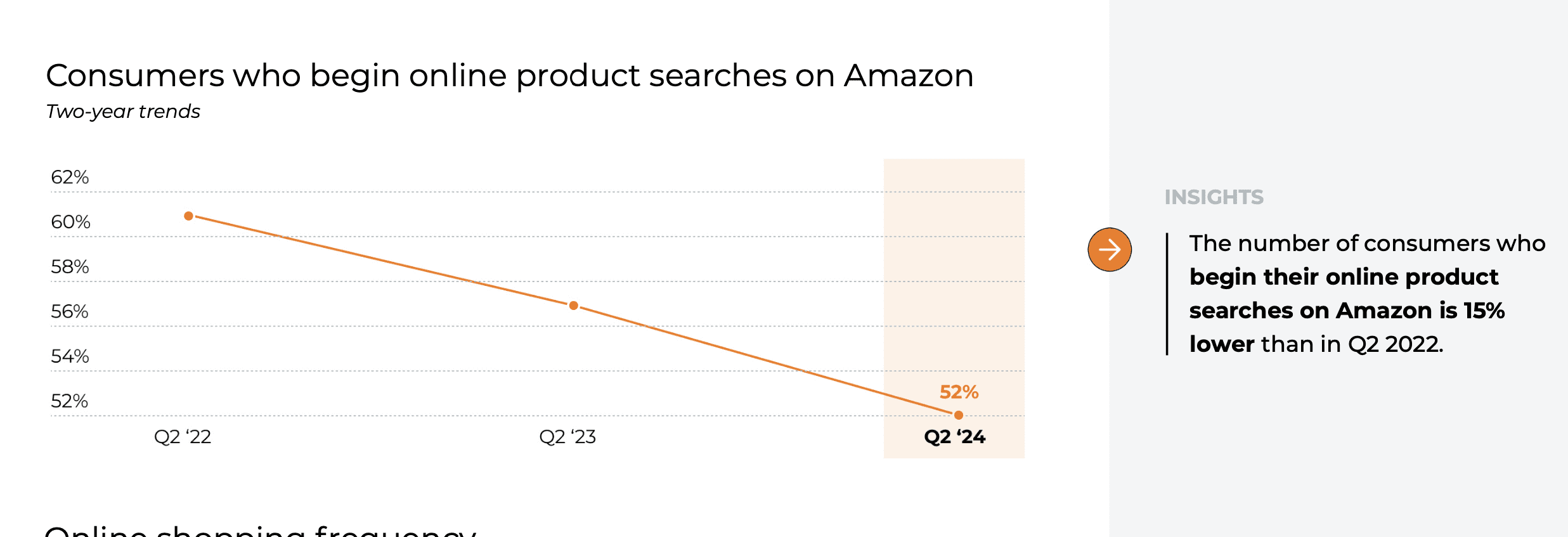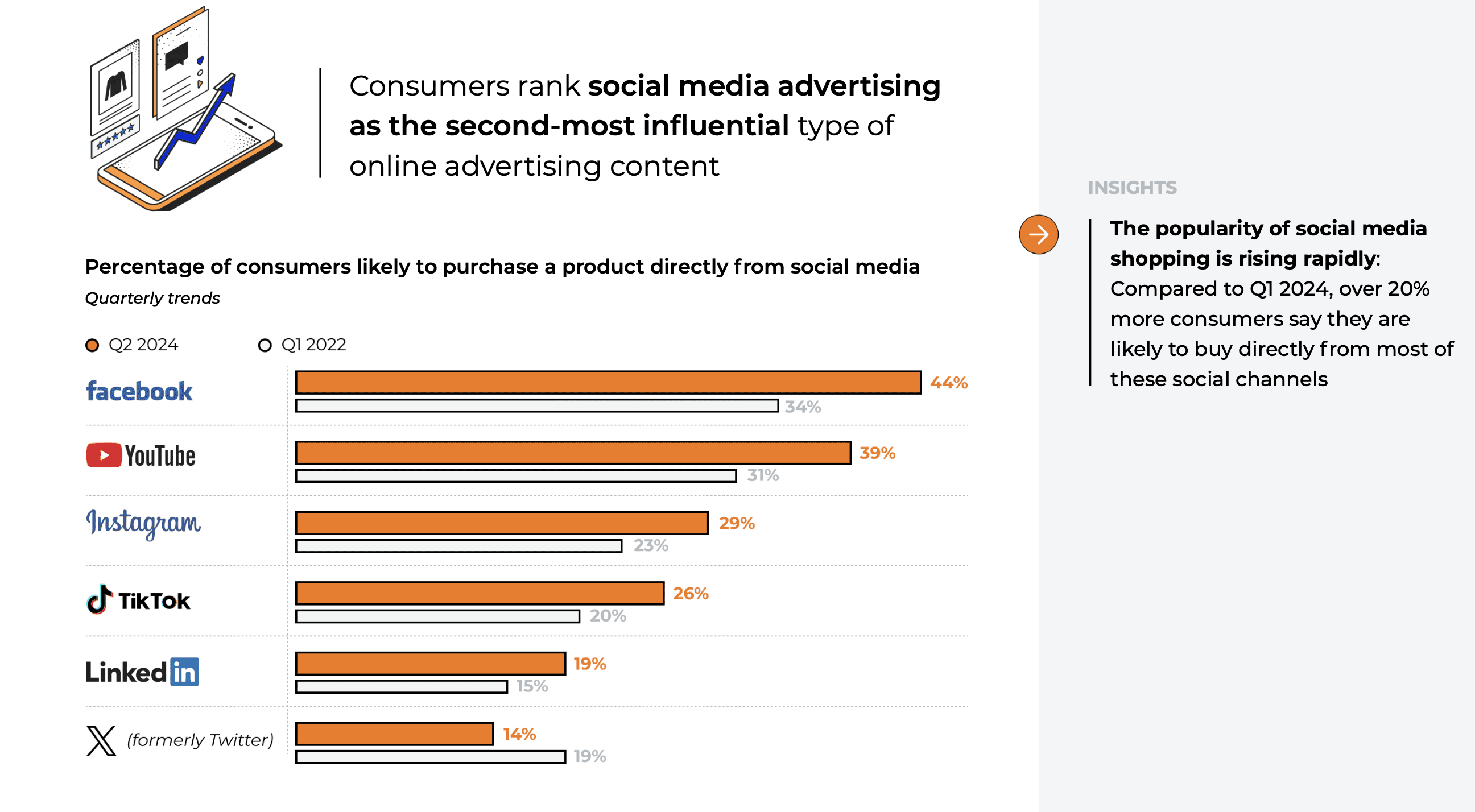Amazon has long been a go-to platform for online product searches, threatening Google’s dominance. But as mighty Amazon gears up for its Prime Day extravaganza, research from Jungle Scout shows that the company is vulnerable. According to The Jungle Scout Consumer Trends Report for Q2 2024, the number of consumers starting their online searches on Amazon has declined as more shoppers turn to other platforms. This trend is driven by the growth of social media destinations such as TikTok and Instagram, and retailer sites like Walmart.com, Temu, and SHEIN, which are rapidly gaining popularity among cost-conscious consumers looking for budget-friendly options.
Alternative Retail Sites
Walmart.com, in particular, is becoming a significant player in the eCommerce market. Known for its extensive product range and competitive pricing, Walmart is attracting consumers who traditionally would have started their searches on Temu and SHEIN are also making inroads by offering ultra-low prices and appealing to shoppers seeking bargains. In response to this increased competition, Amazon has announced plans to launch a budget storefront targeting Chinese sellers. However, focusing on cheaper products may not be enough to address the broader shift in consumer behavior towards more diverse shopping platforms.
The report notes that consumer preferences for shopping platforms often depend on the type of product being purchased, too. For instance, Amazon remains a top choice for electronics, books, and toys, while Walmart is preferred for groceries and home essentials. Home Depot and Lowe’s are favored for home improvement and garden supplies, reflecting their stronghold in the DIY and seasonal project markets. Interestingly, Home Depot has seen a significant increase in both in-store and online shopping, driven by summertime project needs. These trends indicate that consumers are becoming more selective about where they shop based on specific needs and product categories.
Social Shopping’s Role
While intent-based searches on platforms like Amazon and Walmart remain strong, social shopping is also playing an increasingly significant role in consumer behavior. A substantial portion of consumers begin their online product searches on social media platforms, with TikTok being a particularly influential player. Almost 40% of Gen Z starts their consumer journey on TikTok, reflecting the platform’s growing impact even at a time when its future existence in the United States is in doubt based on Congressional legislation. This shift towards social shopping is not merely about discovering products; it’s about engaging with content that influences purchasing decisions.
Social media platforms like Instagram, Facebook, and TikTok have integrated shopping features that make it easy for users to buy products directly within the app. For example, TikTok has introduced shopping features such as shoppable live streams and product links directly in videos, facilitating a direct transition from content to purchase. These integrations are changing how consumers interact with brands, favoring the immediacy and engagement offered by social media.
However, while social shopping is growing, it complements rather than replaces intent-based searches on traditional e-commerce sites. Brands are finding that a balanced approach, combining both social media and established eCommerce platforms, is essential for reaching a wider audience.
Generational Preferences in Shopping Platforms
Generational differences also play a role in shaping where consumers choose to shop. Gen Z, for instance, is most likely to begin their product searches on social media channels like TikTok, valuing the interactive and visual content these platforms provide. Millennials, on the other hand, often start their searches on Facebook and YouTube, relying on product reviews and demonstrations. This generation is also highly responsive to email marketing, which significantly influences their purchasing decisions.

Gen X tends to blend traditional e-commerce with social media usage, frequently starting their searches on Amazon or Walmart.com. They prioritize convenience and reliability, often choosing platforms known for their wide product range and trusted delivery services. Baby Boomers prefer search engines like Google for their product searches, valuing straightforward and familiar ad formats. When they do engage in social shopping, Facebook is their platform of choice, reflecting their comfort with this well-established social network.
Understanding these generational preferences is important for brands looking to tailor their marketing strategies effectively. Brands can better target their advertising efforts and enhance consumer engagement by recognizing where different age groups prefer to shop and what influences their purchasing decisions.
Recommendations for Advertisers
One-size-fits-all approaches are less likely to work for advertisers. They need to adopt strategies that address the diverse way consumers are looking to buy. Here are some specific insights and recommendations:
Diversify Across Multiple eCommerce Platforms
While Amazon remains a vital platform, consider expanding your presence to Walmart.com, Temu, and SHEIN. These platforms are attracting a significant number of budget-conscious shoppers who might not turn to Amazon first. This diversification helps brands capture a broader audience and mitigate the risks associated with relying too heavily on a single platform.
Embrace Social Shopping Features
Develop comprehensive social media strategies that include shoppable posts, influencer partnerships, and engaging content on platforms like TikTok, Instagram, and Facebook. Social media is not just about advertising; it’s about creating content that resonates with your audience. Use features like Facebook Marketplace and TikTok’s shoppable live streams to make the shopping experience within these platforms more engaging and immediate.
Create Meaningful Content
On social sites like TikTok and Instagram, content is essential. Brands need to focus on creating authentic, engaging, and entertaining content that speaks directly to their target audience. This could involve behind-the-scenes videos, user-generated content, influencer collaborations, and interactive live streams. The goal is to build a community around your brand and encourage organic engagement.
Tailor Marketing Messages for Different Generations
Understanding the nuances of each generation’s shopping preferences can significantly improve your marketing effectiveness. For Gen Z, focus on visually engaging content and quick, interactive experiences. Millennials respond well to detailed product reviews and demonstrations, as well as effective email marketing campaigns. Gen X and Baby Boomers value convenience and reliability, so ensure your eCommerce platforms are user-friendly and consider more traditional digital ad formats like search engine ads.
Use Data-Driven Insights to Optimize Campaigns
Use the data from your multi-platform presence to continually refine and optimize your marketing campaigns. Track which types of content and ads perform best on different platforms and among different demographics. Use these insights to make informed decisions about where to allocate your advertising budget and how to adjust your strategies for maximum impact.
Contact True Interactive
At True Interactive, we’ve been helping our clients maximize their digital ad spend since the dawn of digital. To learn about our client successes, visit our website and read our case studies about digital advertising.



